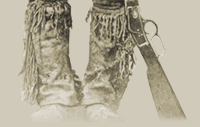|

[ Project Plans | Essential
Questions | Knowledge Hunt | Glossary | Links ]
Are We All Equal Yet?
Using Personal Stories to Study the Moral and Ethical Issues of
Prejudice in Canada
Introduction
Students need to recognize how individuals, groups and governments
interact and bring about change, recognize and respect the democratic
rights of all citizens in Canada, and recognize the influence of
historical events and legislation on democratic decision-making
in our country. How can we critically analyze different times in
Canadian history where the rights of citizens were taken away or
they were treated differently than others? How did people react
to racism? Is prejudice still an issue?
Project Explanation
In this project, students will develop skills of critical and creative
thinking as they analyze the perspectives of various visible minority
people throughout Alberta History. Students will analyze the stories
of how specific people dealt with racism or sexism, and develop
a PMI chart (Positives, Minuses, Interesting) of what the person
did. They will then participate in a critical group discussion about
prejudice. Finally, they will write about their opinions and feelings
on the issue in a format of their choice, and create a poster to
inform others about how these historical figures fought against
prejudice.
Alberta Social Studies Curriculum Unit Connections
Grade Four - Alberta: The Land, Histories and Stories
4.2 The Stories, Histories and People of Alberta
4.3 Alberta: Celebrations and Challenges
Grade Five - Canada: The Land, Histories and Stories
5.2 Histories and Stories of Ways of Life in Canada
5.3 Canada: Shaping an Identify
Grade Six - Democracy: Action and Participation
6.1 Citizens Participating in Decision Making
Materials and Resources Needed
Procedures
Students will create examine the issue of racism and prejudice
through a study and discussion of how different Alberta Mavericks
faced the problem. They will research the experience of one Maverick,
finding out what they did to get past the prejudice of others, discuss
the positives and negatives of their actions, and write about their
own personal opinion on prejudice and intolerance.
Begin by introducing the terms "prejudice" and "racism,"
asking the students to share thoughts and ideas that they have when
they hear the words. Explain that they will be looking at some Canadian
historical figures and assessing how they were able to deal with
prejudice.
Using the Mavericks: An Incorrigible History of Alberta
site, students will research about different people that faced some
form of prejudice. They may examine the life of:
- James Ma Poy
- John Ware
- Tom Three Persons
- Henrietta Muir Edwards
- Csavossy's
- Thomas and Lena Gushul
- Picariello/Losandro
- Dr. Helen Belyea
- Regina Cheremeteff
- Melvin Crump
What type(s) of prejudice did these people face? How did they deal
with the prejudice? What actions did they take? The manner in which
they dealt with prejudice may be specified or may only be alluded
to in the text.
On their own, students will now create a PMI chart where they list
the positives, the minuses, and anything interesting about the Maverick's
experience with prejudice. Then students may share the stories of
the Mavericks and their own thoughts and ideas with the class during
a critical discussion about prejudice, racism, and sexism. Questions
such as the following may be discussed:
- Why is there such a thing as prejudice?
- Does anyone have the right to treat another human being differently?
- Is there still prejudice in our society?
- What do you think are the basic human rights of any person?
- How would you feel living in these people's place?
- Should there ever be exceptions? For example, is it prejudiced
to charge young drivers higher insurance rates? Is it prejudiced
to expect certain physical qualifications to do a job?
Have the students write a journal entry about the issue of prejudice.
They may write their response as a narrative, a personal reflection,
an essay, or even as a poem. They will then create some type of
poster that will be used to inform others around the school about
prejudice and what they can do about it. It could tell the story
of how a Maverick fought against prejudice, what we can do to reduce
prejudice, or even the student sharing their feelings or thoughts
through the writing or poetry they did previously.
Assessment and Evaluation
- In groups or as a class, students may conference and debrief
each other after they have presented their projects. Students
should be encouraged to share their personal reflections about
how it felt to speak in front of their audience.
- Students may use their rubric as a guide for writing a self-assessment
of their project work. They will determine their level for each
of the categories and use the criteria specified in their rubric
to justify them.
Ideas for Enriching this Project
- The novel, Underground to Canada, written by Barbara
Smucker is a tale about the Underground Railroad and may be read
and studied as another example of historical prejudice.
- Photographs of the Mavericks from the ImagesCanada.ca website
may be used on their posters by students to add to the visual
appeal. Watercolours or felts could be used to make the photos
stick out.
 |



![]()

